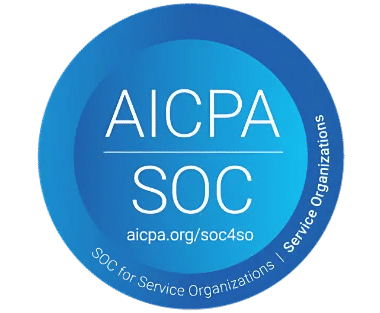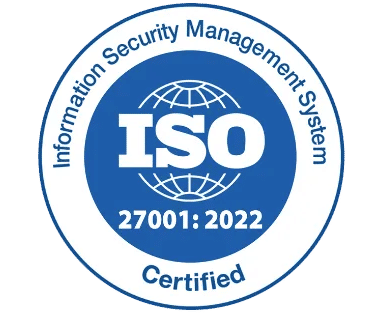Important Steps in the IT Asset Management Process

Effectively managing IT assets is essential for reducing costs, improving performance, and ensuring compliance. From procurement to disposal, each step in the asset lifecycle plays a critical role in keeping your technology ecosystem organized and secure.
A well-defined IT asset management process enables better decision-making by providing accurate insights into asset usage, condition, and ownership. This visibility helps optimize resource allocation and enhances operational efficiency.
With a structured approach, businesses can minimize unnecessary purchases, reduce risks, and extend the lifespan of their assets. Ultimately, effective IT asset management supports smoother day-to-day operations and contributes to long-term business stability and growth.
What is IT Asset Management?
IT Asset Management (also known as IT Inventory Management) denotes the management of the phases that constitute the lifecycle of an asset. ITAM is used to streamline the process of managing and tracking company assets like computers, laptops, tablets, cell phones and other similar devices. It helps organizations in tracking their assets effectively and efficiently. In other words, regularly inspecting the IT assets if they are in use and optimal can be considered ITAM. What are IT assets, then? IT assets are all a company’s software, hardware, and integration system components.
Why is IT Asset Management Important?
Being productive is important for everyone in both their personal and professional lives. However, not being productive enough may be more costly in professional life. Nowadays, it is next to impossible to think of a company that does not use technology because technology is crucial to keep up with the times. Therefore, companies invest money of high amounts in technology in numerous areas, and sometimes they even forget where they invested. Here, IT Asset Management becomes involved. IT Asset Management tracks the IT assets and the value they added. If an asset does not contribute to the company, this means it is time to renovate, upgrade or dispose of it.
Advantages of IT Asset Management
If it is considered in more detail, what benefits does ITAM provide?
Reduced Costs & Improved Budget
In general, since an enhanced budget means more quality service and a chance to grow the company, saving money and making more profit are some of the company’s main goals. However, unnecessary and missed out expenses cause wanes in budgets. Hence, IT Inventory Management plays a big role here. As an illustration, let us discuss a license. If an annually paid license is not in use, it is nothing but a redundant cost. With IT Inventory Management, this problem can be detected and eliminated easily, which results in an additional budget.
Easiness in Tracking of IT Assets
To obtain continuity, conducting a business brings along the liability of controlling all the hardware and software systems. However, manually controlling these ends up with complicated sheets and countless documents. Since it is challenging to find the needed information in such chaos, making plans becomes out of the question. With IT Asset Management, data is collected in an organized way, and tracking becomes much easier.
Better Forecasting & Insights
Knowing the past spending, the available equipment, and coming expenditures helps keep track of the budget. Hence, the period can be managed successfully, and stronger decisions can be made for the future. IT Asset Management provides insights for new IT investments.
How does an IT Asset Management Process Work?
- Asset Registration
- Checking Assets as a Whole
- Being Aware of the IT Assets Lifecycle
- Location Tracking Tracking
- Maintenance Processes
- Understanding the Necessity of an Asset
- Tracking of Warranties
- Tracking of Licenses
- Measuring of IT Costs
Asset Registration
First, purchased assets should be recorded to carry on the business. Usually, a manual registration must be done for each asset.
Checking the Assets as a Whole
The information of the current assets should be known to prioritize the assets and improve the work done. The aforementioned information includes
- the number of IT assets
- available and expired licenses
- regular payments.
Being Aware of the IT Assets Lifecycle
The lifecycle of an asset roughly is made up of
- Need
- Purchase
- Active use
- Upgrade and repair when required
- Disposal
Location Tracking
Especially for companies that are conducted on more than one hand, location tracking is necessary to reach an asset readily.
Maintenance Processes
Most IT assets need periodic maintenance. It is very important to log maintenance dates and maintenance operations. During the ITAM process, the maintenance operations performed on the assets are logged. Thus, after a while, when the asset is examined, all the maintenance performed can be easily accessed.
Understanding the Necessity of an Asset
While prioritizing assets, another significant piece of information is how much an asset is used. Thus, the asset that should have been sacrificed can be determined while coping with a budget deficit.
Tracking the Warranties
Following the repair dates and maintaining devices lead to having durable devices.
Tracking the Licenses
Licenses are important for companies in several ways. Licenses document the agreement between the buyer and the seller and the responsibility of both parties. That’s why license management for hardware and software is a critical part of IT Asset Management.
Measuring IT Costs
In order for a company to achieve its goals, it must use its IT budget effectively. It is important to be able to optimize IT costs in which IT assets should be invested and which IT assets should be eliminated. For this reason, the importance of each application should be determined and unnecessary costly applications should be disabled.
What is the Role of an IT Asset Manager?
Professionals working as IT asset management specialist or IT asset manager are responsible for the end-to-end organization and implementation of all the above ITAM processes in businesses. They can be found in various industries, from small to large companies, from public sector organizations to private enterprises.
ITAM specialists are charged with providing a clear understanding of how assets are used within an organization, which helps them make informed decisions about whether or not those assets should be replaced or upgraded. This requires attention to detail and familiarity with various types of data, including financial information, inventory records, service history records and more. Furthermore, ITAM professionals must have strong communication skills and be able to communicate effectively across departments and levels within an organization.
The role of an IT asset manager is not only to oversee the management and maintenance of information technology assets on behalf of the company but also to ensure that these assets are being utilized in ways that are compliant with internal policies, as well as external regulations.
Benefits of IT Asset Management Solutions
In the digital world, performing ITAM processes with traditional methods has become dysfunctional. IT asset management solutions are software solutions developed to make ITAM processes more effective.
ITAM solutions help you reduce costs by ensuring that all the software licenses in your organization are being used properly without any violation. They also help you detect unauthorized software use and prevent license compliance violations. This way you can avoid paying extra money on software licenses that have been misused or improperly used.
ITAM solutions can help you improve efficiency by enabling you to track your assets and manage them efficiently. They automate many manual tasks such as software deployment and license management, thereby improving efficiency in these processes. In addition, they also allow organizations to monitor their network resources remotely from one central location thus reducing travel expenses associated with managing hardware and software licenses manually.
- Application Portfolio Management Software
- Hardware Asset Management Software
- IT Cost Management Software
- Integration Inventory Management Software
Conclusion
As businesses integrate more digital solutions, IT asset management becomes a critical pillar of success. A well-maintained IT asset inventory system streamlines digital transformation, optimizes resource allocation, enhances security, and ensures scalability.
By implementing best practices in asset management, companies can maximize the value of their existing resources, reduce risks, and make strategic technology investments that drive long-term growth.
Managing IT assets isn’t just about tracking hardware and software—it’s about building a solid foundation for a smarter, more agile digital future. As companies embrace digital transformation, Asset Management 365 will be the key to ensuring a seamless, secure, and cost-effective transition.
Frequently Asked Questions
What is the first step in the IT asset management (ITAM) process?
The first step is asset discovery, where all IT assets (hardware and software) are identified, catalogued, and documented across the organization.
How often should IT assets be audited or inventoried?
IT assets should be audited at least annually, though many organizations prefer quarterly or semi-annual checks to maintain accuracy and compliance.
Why is asset lifecycle management important in ITAM?
Asset lifecycle management helps track an asset from procurement to retirement, ensuring optimal use, timely upgrades, and secure disposal, all while reducing unnecessary costs.
What tools are used in the IT asset management process?
Tools often include ITAM software, CMDBs (Configuration Management Databases), and automated discovery tools that help with tracking, monitoring, and reporting assets in real time.
How does ITAM support cost optimization?
ITAM helps avoid over-purchasing and underutilization by providing visibility into usage, license compliance, and maintenance needs—leading to better budget control and smarter IT investments.









_svxLrd-8yH.png)

_2VYSFUTN5m.png)

_JiluXJRGNl.svg)

_2djTKNocf.png)





_Rapo0hRMBy.png)

















